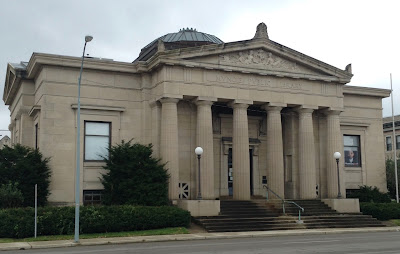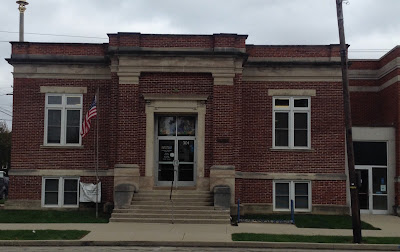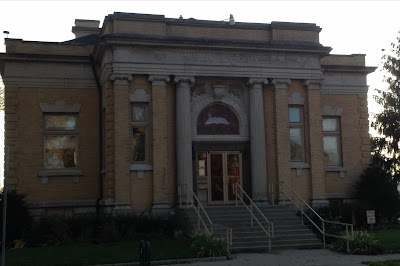He offers up no additional proof other than that he heard that Cancellera had his own mechanic and that his bike was kept separate. That is enough for him to conclude, "That fucker probably did have a motor." He doesn't slip this in until page 120 of the 352-page book, but it sets the locker room tone of the many unsubstantiated accusations and flimsy grievances that fill the book that is broken up into 59 chapters, some as short as two pages. Rather than employing the word "allegedly," he hopes to keep the lawyers at bay here and elsewhere with the word "probably."
Prior to mentioning Cancellera's "motor" he wrote he was "pretty sure" the Operation Puerto blood bags labeled "Luigi" belonged to Cancellera. That is another rumor that has been floating around for years that is too juicy for him to ignore even though later on in a footnote he says that Thomas Dekker, his former teammate on Garmin and confessed doper, who Gaimon likes, told him that he was "Luigi."
He also uses "probably" to surmise that Lance Armstrong's coach Chris Carmichael "made his name on the wrong side of the rules," just throwing that in as an aside as if it is a personal grudge. The book oozes with gossipy innuendos about those who displeased him, including his girl friend who left dirty dishes in the sink and her clothes all over the floor. He drops in the mention of a woman friend who tells him that Armstrong connected with her on Twitter and then drove more than two hours to have sex with her.
He has it in for fan-favorites Chris Horner and Jens Voigt, disbelieving that they were clean considering the era they rode in and the teams they rode on and the results they produced. He finds Voigt particularly irritating. He says that the two riders he would most dread being in a battle with on a climb are Nairo Quintana, because he is the best, and Voigt, because he would talk his ear off. He repeats the rumor that Horner was "Rider 15" in USADA's case against Armstrong. Gaimon was thrilled to beat Horner at the 2016 Redlands Tour in California, the second time he'd won it, as Horner entered the race cocky, actually calling it The Chris Horner Classic having won it four times. Gaimon wrote, "As much as I hated him, I appreciated that Chris was riding so badly this year, because it meant he was clean."
He quotes Horner as saying he would have won the Tour of Utah if the UCI had let him use his asthma inhaler. Asthma TUEs (the very hazy Therapeutic Use Exemptions) are one of the great hypocrisies of the sport. Nearly a third of World Tour racers have prescriptions for asthma inhalers, what he refers to as "a semi-legal performance enhancer." In his book "Pro Cycling on Ten Dollars a Day" he told that when he signed to ride for the Jelly Belly team the team doctor encouraged him to complain of asthma symptoms so he could qualify for an inhaler. This issue should receive as much clamor as Cancellera having a motor. Caffeine suppositories also fall in the gray area. He quotes a teammate as saying a team he had previously ridden for matter-of-factly used them for time trials and had no second thoughts about the matter.
One rumor that Gaimon refuses to endorse is that his teammate Ryder Hesjedal had a motor in his bike at the 2014 Vuelta. When Hesjedal crashed and his rear wheel continued to spin like mad, many thought that was incriminating evidence. Gaimon wrote that even though he didn't really like Hesjedal he wouldn't accuse him of having a motor, especially since he'd had such a lousy year, not winning a race. It's not the only potshot he takes at him. At an early season training camp when Gaimon had a better time on a climb than Hesjedal, the former Giro winner refused to acknowledge that Gaimon was stronger than him on the day, giving the lame excuse that his water bottles were heavier than Gaimon's. He also revealed that Hesjedal, as well as Dekker, both former dopers, liked to use chewing tobacco, a stimulant of a sort and remnant of the doping era. Others too indulge, another of the many insider tidbits he reveals that one doesn't come across in cycling publications.
Gaimon also mentions the not widely known fact that Hesjedal received a million dollar bonus from Garmin for winning the Giro in 2012 without saying if he shared any of it with his teammates. He's very open about money matters. He earned the minimum of $50,000 his first year with Garmin-Sharp in 2014. When the team combined with Cannondale the next year there was no place on the team for Gaimon, so he returned to a US domestic team. He rode well enough to be invited back to Garmin at a salary of $70,000, though when the contract arrived in the mail it was only for $65,000. He was infuriated, saying he'd never forgive the team director Jonathan Vaughters for this outrage. He had no choice but to accept it. He didn't get to race much that final year, increasing his fury with Vaughters.
He lashes into Vaughters calling him an "evil hypocrite" and doubted that he had any "real friends." He accuses him of staying in $800 a night hotels while nickel-and-diming his riders. He doesn't trust anything Vaughters says, even that he doesn't drink coffee when he declines an invitation from Gaimon to meet for a cup. He said a popular t-shirt among those who have ridden for him reads "Friends don't let friends ride for Garmin." All this is highly inflammatory, sullying the general high regard accorded Vaughters, who pals around with former Secretary of State and presidential candidate John Kerry. It will stun many of those who ponied up a few dollars to support Vaughters a few months ago when his team lost a prime sponsor and looked as if it was going to be dissolved. The fan support of over a half million dollars was quite remarkable, and helped encourage a new sponsor to come forth with millions to save the team.
Another t-shirt Gaimon liked was one worn by his teammate Lachlan Morton that had a likeness of Armstrong's face and the words "So Dope," implying it pays off. Gaimon once sold t-shirts, including one that read "Liveclean," that he had to discontinue when confronted by Armstrong's lawyers. Morton was a free-spirit who Gaimon said was "screwed" by Vaughters. He left racing for a year, but Gaimon said Morton came from wealth so he didn't need to scrape to get by as he did when he left the World Tour.
Another who had rich parents was Caleb Fairly, who Gaimon reveals was only on the Garmin team because his parents were pseudo-sponsors contributing a hefty sum to it, more than covering his salary. When Gaimon was seeking a team to ride for in 2015, he tried to recruit sponsors to contribute to his salary so a team could afford him, not an uncommon practice. Another of his juicy insider tidbits that may or not have violated a personal relationship is that his friend Dekker had no monetary concerns, as he had a billionaire girl friend he lived with in LA. Gaimon goes further with the revelation that one wouldn't find in the cycling press that Dekker has a gargantuan foreskin.
Gaimon tosses a few petty barbs at Dave Ziebriskie, an older teammate he didn't know very well. He says he wasn't friendly the first time they met. After he bought Zabriskie’s car in Girona he discovered ketchup packets from McDonald's and Burger King in the glove compartment. Zabriskie claimed to be the first vegan to ride The Tour de France. Those packets could have been left by anyone, but Gaimon wishes to imply that Zabriskie may be a meat-eater and patronizer of American fast food franchises in Spain. He can understand though why the homesick can descend to going to McDonald's, as he has done it himself. Gaimon gives credit to Zabriskie for pointing out one could see up women's dresses at the Barcelona airport when they walked by a reflective marble surface.
Andrew Talansky takes a hit for sending him back to the team car in a race for his favorite energy bar, refusing the extra that Gaimon had. Taylor Phinney is taken to task for offering money to riders, but not him, to help him win the national championship race where he suffered a near career-ending crash. Gaimon also accuses him of being at fault in the crash for not knowing the course as well as he did. He refers to Rohan Dennis as a "kind of a jerk" and is suspicious of how he managed to lose ten pounds and become a standout--"he either had a good nutritionist or a doctor with cortisone." Regarding Bradley Wiggins he writes "marginal gains my ass," believing his Tour win tainted. He vilifies the Schleck brothers as well, saying they somehow managed to slide under the radar when the dopers confessed, and have had no significant results in the post-EPO era. He refers to Frank as a "washed-up doper."
He does have kind words for Dan Martin. He acknowledges that he is a Real Talent, and one of the few riders who are genuinely better than him, but only because of genetics. He uses a baseball analogy to explain his greatness, saying he was born on third base, but unlike many who are born lucky, he doesn't pretend he got to third by hitting a triple. Martin is humble about his good fortune. Gaimon's genetics aren't so bad either. Vaughters made him take a lab test before he would sign him. The person administering it told him his twenty-minute power-to-weight ratio was "probably" among the top fifty in the world.
Gaimon also has praise for Tom Danielson, even though he wanted to despise him for being a doper. It was Danielson who recommended Gaimon to Vaughters after not being able to drop him on a long strenuous climb. He invited him to train with him. He was such a nice guy he took Gaimon’s clothes out of the drier and left them folded on his bed, even his underwear. Danielson gave up his own aspirations to contend for the season-opening Tour of San Luis in Artentina in 2014 to serve Gaimon when Gaimon surprised everyone and won the first stage after getting in an early breakaway. It was Gaimon's first race with Garmin and a storybook start. He ended up finishing second overall to Quintana, still a great accomplishment.
At the end of one mountain stage, where Danielson was instrumental in helping him preserve his standing, they collapsed into each other's arms in tears. Later he tells of Danielson jumping off the podium to give him a big hug "with a tear in his eye" for his help to take the lead at the Tour of Utah. Much as he likes Danielson, he quotes two of Danielson's teammates who were with him when he was dirty as saying, "Even the Spaniards thought Tom was 'abusing the medicine.'"
Gaimon cites other examples of the great gratification riders get from sacrificing for another. At the Tour of Colorado, shortly after Gaimon had buried himself to help Alex Howes, Gaimon is rewarded with a hug and a kiss and a chorus of "thank yous" as Howe gushes tears. Gaimon said he was crying too and is crying once again as he writes of it. That is much more the essence of the sport than all the pettiness he inserts. The editor of VeloNews, Fred Dreier, who knows Gaimon well and has worked with him, said he was glad he wasn't asked to edit the book. It would have been a nightmare because as a responsible journalist he would have had to cut out an awful lot that Gaimon felt the need to include. He no doubt would have rephrased Gaimon's description of the books by Tyler Hamilton and George Hincapie as "ghost-written piece-of-shit" books, and his description of David Millar's book as a "flimsy effort to justify his doping." He'd probably question if he truly thought it funny to comment,"fuck broccoli, or at least cover it in cheese"? He surely would have deleted his irrelevant comments calling Dennis a jerk, Zabriskie unfriendly, that he didn't really like Hesjedal and on and on.
He is too good of a writer to insert such juvenile asides. He does score occasionally in his efforts to crack wise or contrive a colorful metaphor. He deserves commendation for his comparison of tissues in a hospital waiting room to hay bales on race courses. His father is terminally ill from cancer. When Gaimon visits him in the hospital, he's as relieved at the site of tissues as he is for the hay bales that cover dangerous objects when he's racing. "Those fuckers know we're going to cry here," he writes.
He scores points too for referring to Henry David Thoreau as his favorite "poet/philosopher," but then loses a few for never quoting him.




















